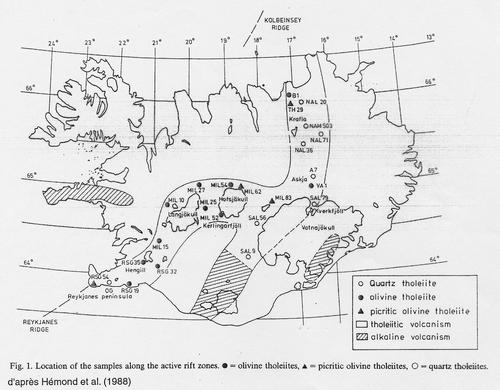

A combination of partial melting, hydrothermal alteration, re-melting, re-mixing, and aging determine the composition and spatial distribution of tholeiitic and alkaline volcanism across Iceland.
Dr. Hemond presented results showing that recycled or altered Icelandic crustal material may be source material for some Icelandic tholeiites based on results of 230Th/232Th vs. 238U/232Th calibrated phase diagrams.
These conclusions were then checked with multiple geo-chemical methods, including 87Sr/86Sr-dO18, 232Th/230Th-dO18, and Nd/Sr ratio methods.
Lead isotope and strontium isotope results show that the Icelandic plume is heterogeneous, with a lead-poor component specific to Iceland, and an enriched strontium component typical of Oceanic Island Basalts. It can be demonstrated that there is mixing between the plume and the adjacent mid-ocean ridges. It was concluded that geochemical partition coefficients may be used to model crustal melting, and that based on the results presented, geochemical heterogeneities may be due to recycling of ancient subducted crust.
 |
 |